Lasats were a humanoid sentient species native to the Wild Space planet Lira San, though the species had settled the Outer Rim world of Lasan. They were thought to have been driven to the brink of extinction when many Lasan were attacked and killed by the Galactic Empire in the siege of Lasan, but, in Wild Space, there were actually millions living on their true, isolated homeworld. Notable members of this species included Garazeb (Zeb) Orrelios, a major player in the early rebellion against the Empire, and Jaro Tapal of the Jedi Order.
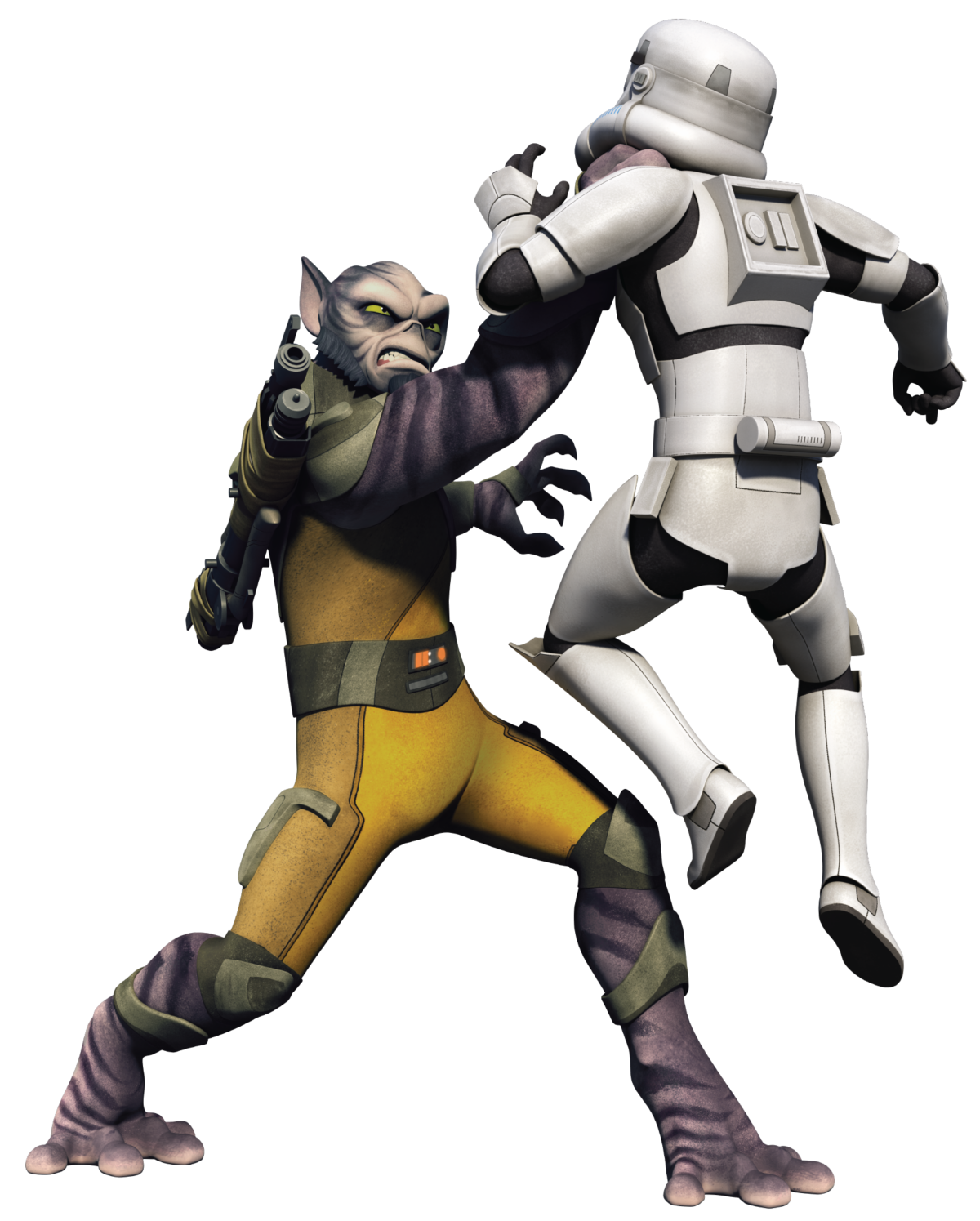
Lasats were known for their great strength.
A humanoid sentient species, Lasats were notable for their impressive height, strength, and agility, with their muscular digitigrade legs enabling them to run faster, jump higher and farther, and move more quietly than humans.
Their large finger pads and prehensile toes assisted them in climbing. In addition, their large eyes and ears afforded them superior sight and hearing over humans and other humanoids. They had the strength to open a powered-down blast door. A height of two meters tall was considered below-average for a Lasat.
The fur patterns of a Lasat varied from individual to individual and could change suddenly as they aged. No two Lasat had the same striping. Some humans considered a Lasat's strong odor unbearably offensive.

Bo-rifles were a tradition in Lasat culture
Within the species, those with fighting skills were highly respected, and they were often members of the Lasan High Honor Guard, a group of highly trained, highly intelligent warriors sworn to protect their homeworld of Lasan. Bo-rifles were a long-standing tradition in Lasat culture. They were used exclusively by the Honor Guard of Lasan. The warrior way of the Lasat was called Boosahn Keeraw. When a Lasat was bested by a superior opponent in combat, they would give them their weapon.
Facial hair was an important status symbol in Lasat culture. Those with green eyes and prominent purple stripes were considered to be attractive by others of their species. Juvenile Lasat were noted to climb tree branches often. The species spoke Lasat, a language whose rs were difficult to replicate by most other species.
On Lasan, time was measured by counting how many of their homeworld's dust seasons they had survived through. The Lasat believed in the Ashla, a "spirit of the galaxy" and a personification of the Force. Using a Bo-rifle, a Lasat was able to channel the Force to see the past and future events. The spiritual leaders of the Lasat people on Lasan were called the Revered Masters, who often carried around Ashla Staffs—staffs with a special connection to the Ashla.
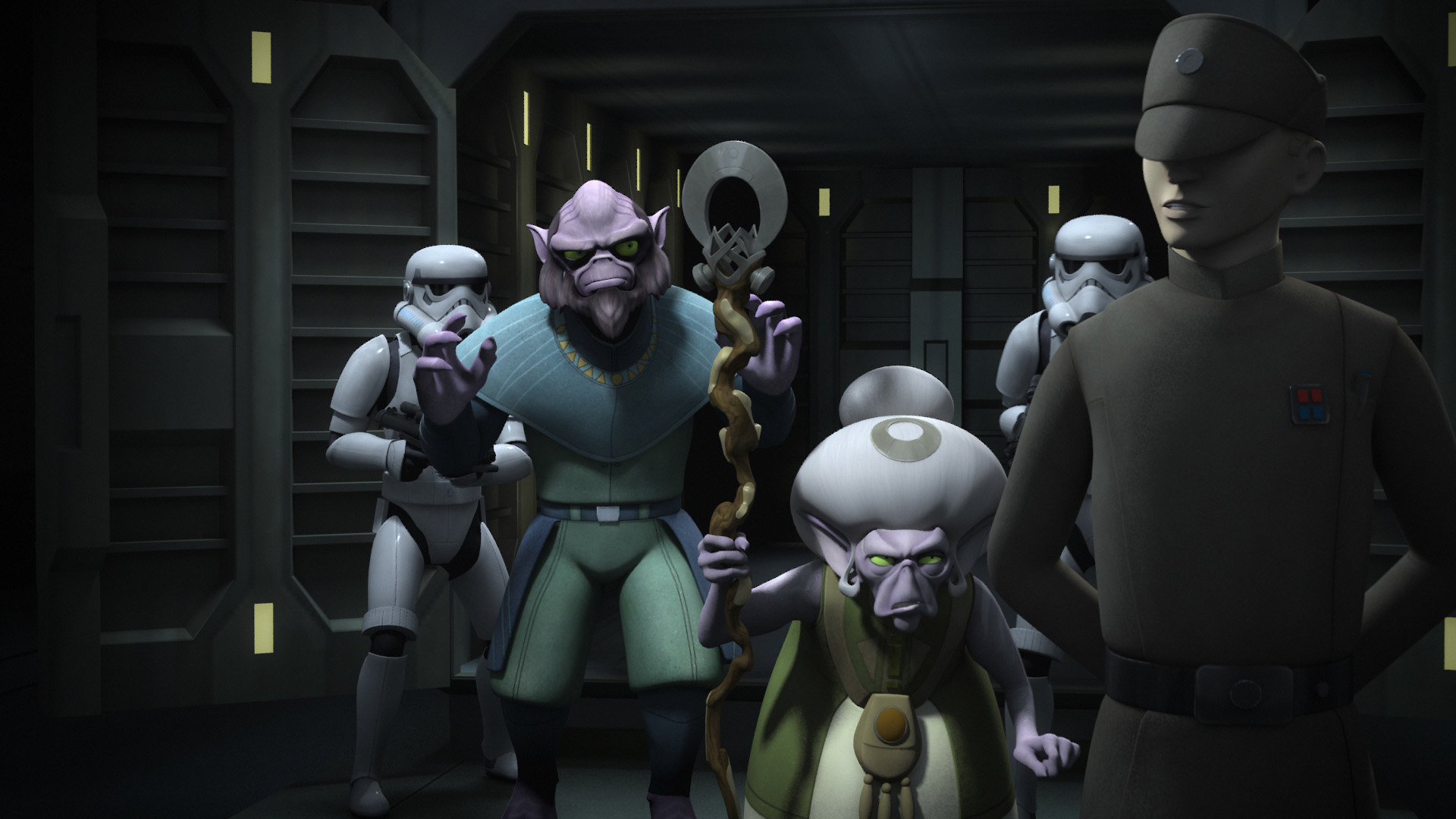
The Lasats Chava and Gron were held prisoner by the Empire.
Lasats were native to the planet Lira San, beyond a collapsed star cluster in Wild Space. At an unknown point in time, a group of Lasats colonized the Outer Rim world of Lasan. Over the years, their homeworld was reduced to myth. During the Clone Wars, a galaxy-spanning conflict between the Galactic Republic and the Confederacy of Independent Systems, at least one Lasat, Jaro Tapal, was a member of the Jedi Order and participated in the conflict. However, the Lasat species as a whole did not participate in the war.
At the war's conclusion, the Republic was transformed into the Galactic Empire. During its reign, the Empire devastated Lasan by destroying the High Honor Guard, the royal family, and killing nearly all members of the species. The Wookiees had attempted to prevent the massacre. This came at the cost of many of their own lives. Since then, Lasats were rarely seen in the galaxy, and no Lasat survivor remained on their homeworld. In their conquest of Lasan, T-7 ion disruptor rifles were used extensively by the Empire. This led to a strong hatred and distrust of such weapons by Lasat survivors. Many of those who survived the fall were later enslaved or killed by the Empire.
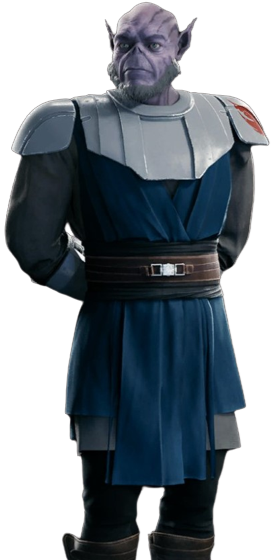
Jaro Tapal, a Jedi General during the Clone Wars.
Following this, Lasat culture fell into decline, and only a few remained who could properly speak their native tongue. The bo-rifle, like the lightsaber of the Jedi Order, became another symbol of a dying age.
Fifteen years after the birth of the Empire, three of the last remaining Lasats in the wider galaxy embarked on a quest to find the legendary Lira San with the help of the rebellion. They succeeded by using ancient Lasat technology in a Bo-rifle to shield the Ghost from being torn apart by the collapsed star cluster blocking their way, and, with the help of Ezra Bridger and Kanan Jarrus, guided them through the Force to the true homeworld. The Lasats in the wider galaxy regained contact with their original homeworld and Lira San became a safe haven for other survivors of the Lasan genocide.
During the High Republic Era, the Lasat Isamer was a leader of the criminal organization Directorate. He kidnapped two royals from planets Eiram and E'ronoh.
During the Clone Wars in the waning years of the Galactic Republic, the Lasat Jedi Master Jaro Tapal served as Jedi General in the Grand Army of the Republic and commanded the 13th Battalion of clone troopers.
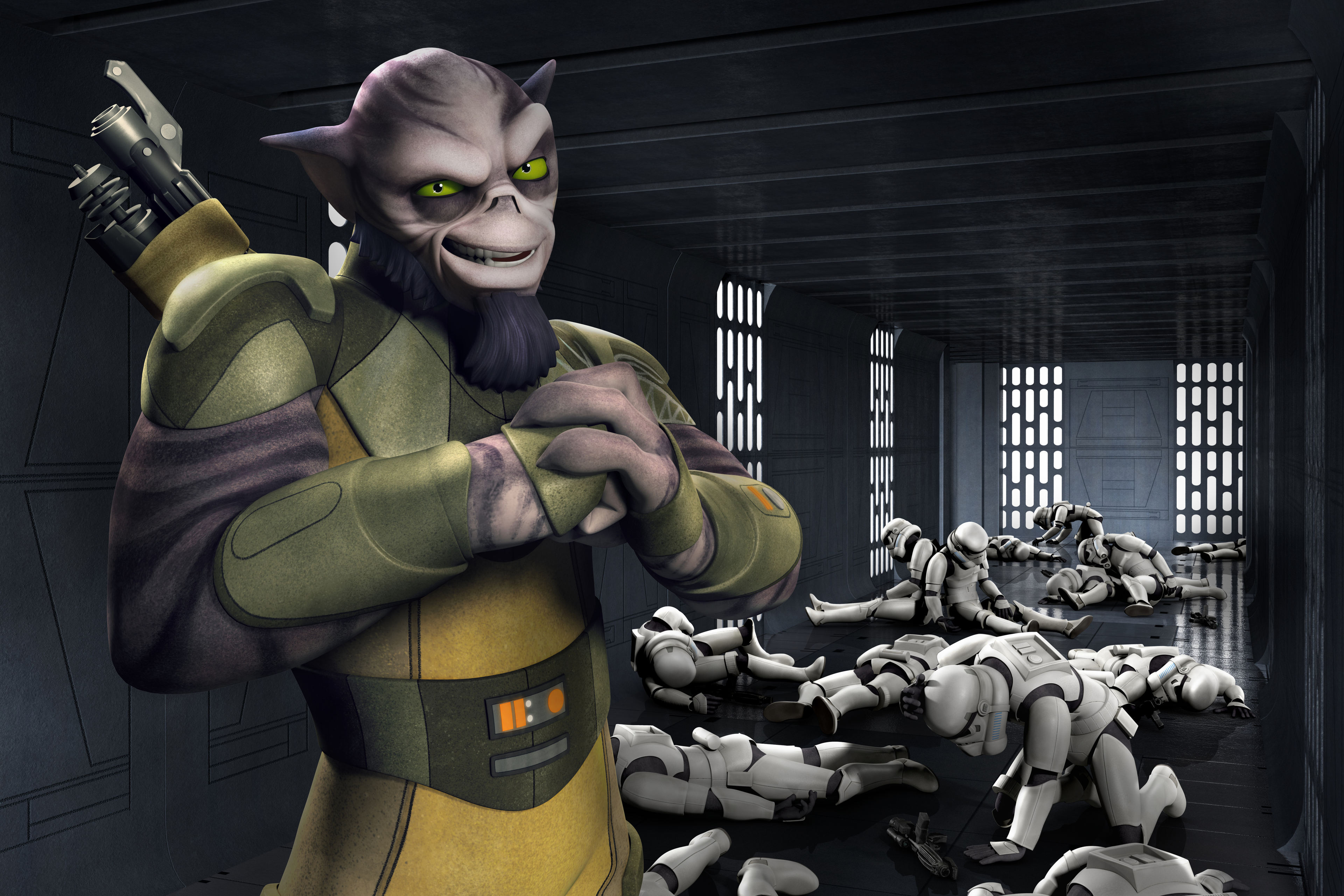
Zeb Orrelios enjoyed beating up stormtroopers.
Following the fall of Lasan, very few Lasats were left in the known galaxy, and of those who survived, most were enslaved by the Empire. They were forced to become a colonial species that migrated and adapted to dominate many worlds. A notable Lasat was Garazeb "Zeb" Orrelios, Captain of the Lasan High Honor Guard. The destruction of his homeworld by the Empire motivated him to become a member of a rebel cell based on the planet Lothal and fight to end the Empire's tyranny. His grandmother was another of the few Lasat that survived the genocide. Some other known survivors of the genocide were Orrelios's fellow Lasan High Honor member Gron and the Lasat mystic Chava. Other survivors included the pirates Grox and Zandarreo who was enslaved by Grakkus Jahibakti Tingi as gladiators.
Because of their scarcity and similarities in their size and strength, Lasats were often taken for Wookiees by some. While some Lasats felt indebted to the Wookiees for them helping fight the Empire during the fall, they despised such comparisons as they felt that it didn't do their own species justice.
A Lasat named Grox the leader of the pirate aboard a during the Galactic Civil War. Grox's pirate crew regularly sold scavenged goods to the Tech Masters who paid well for their work.
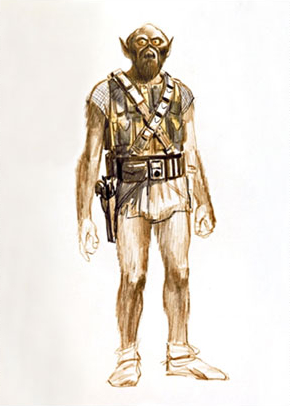
Ralph McQuarrie's concept artwork for Chewbacca, as a smuggler or a bounty hunter.
The appearance of the Lasat species is based on early concept drawings by Ralph McQuarrie for the character that became Chewbacca.
While the first canon appearance of the species was in Star Wars Rebels, it had previously appeared (also based on McQuarrie's concept art) in Tatooine Manhunt, a Star Wars Roleplaying Game adventure that is now designated as part of Star Wars Legends.
For a period of time during the development of Solo: A Star Wars Story, Dryden Vos was intended to be a Lasat.
- Disney Infinity 3.0
- Angry Birds Star Wars II
- LEGO Star Wars: Droid Tales — "Mission to Mos Eisley"
- LEGO Star Wars: The Force Awakens
- Star Wars: Galaxy of Heroes
- "Imperial Spaghetti!" — LEGO Star Wars 1